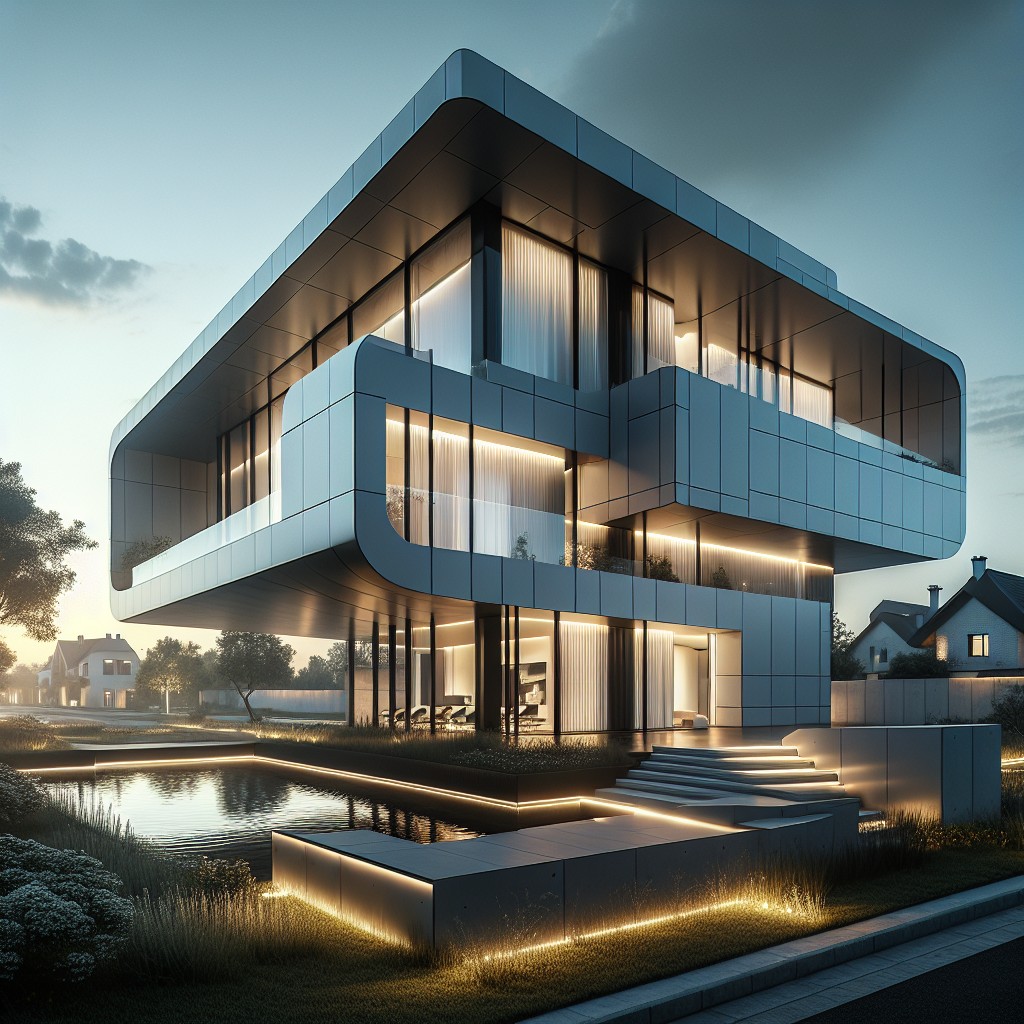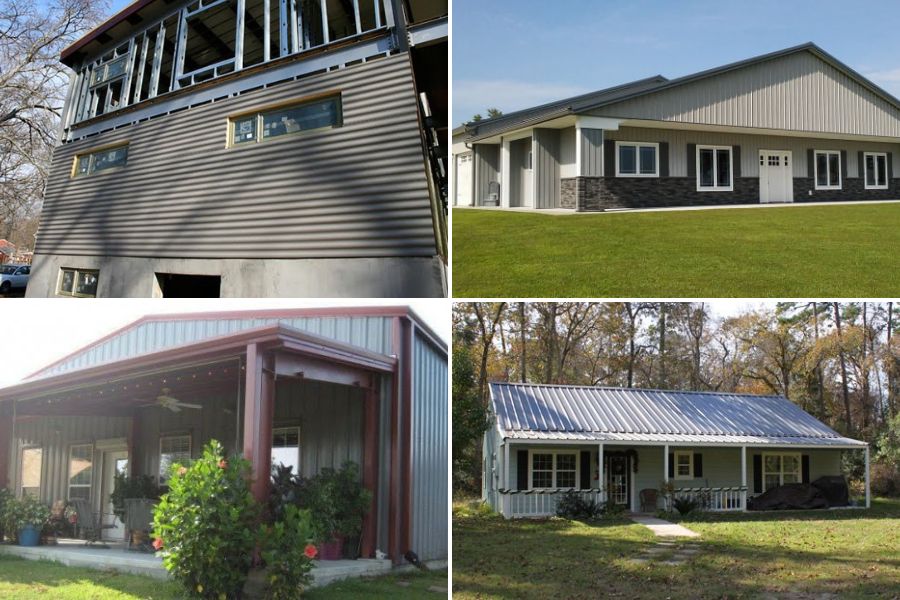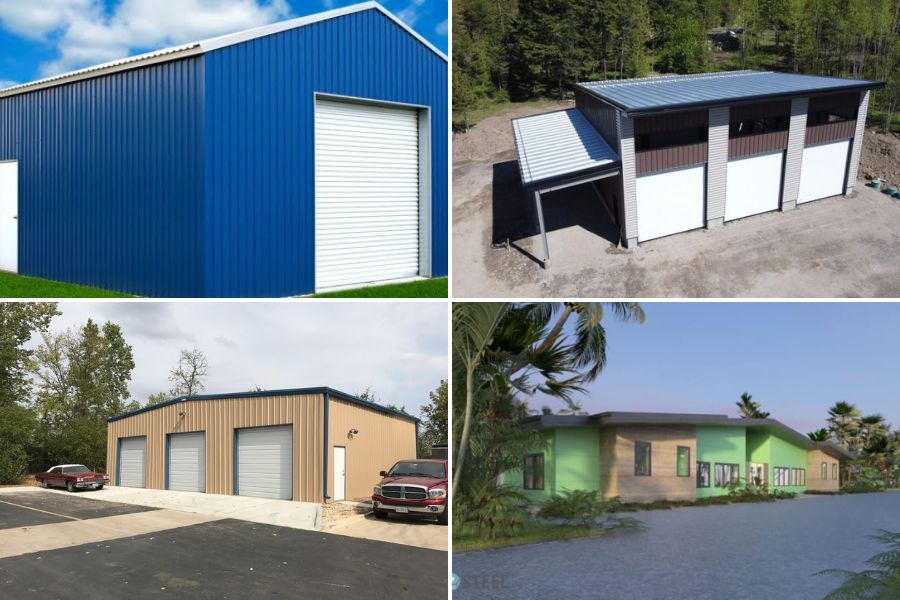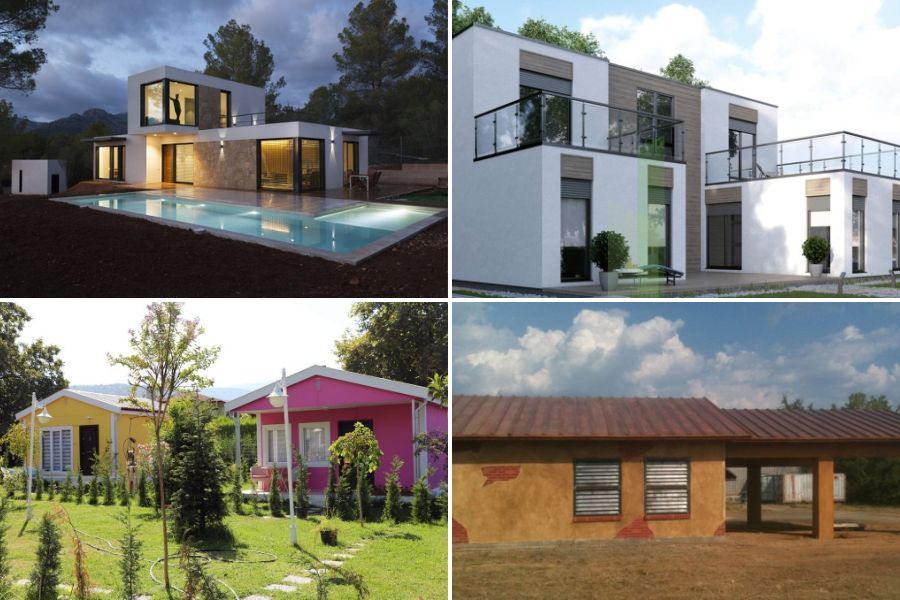Last updated on
Understanding the cost of Mighty Buildings is crucial because it offers insightful information on the expense of incorporating sustainability into your home or commercial building.
Understanding the cost of Mighty Buildings, revolutionary 3D-printed, energy-efficient homes can seem complex but fear not.
This write-up promises to clarify your queries and give you an explicit breakdown of factors influencing their price tag.
The cost of Mighty Buildings can range from $232,000 for a studio to over $985,000 for a three-bedroom house, making them a cost-effective solution in the burgeoning sustainable housing market.
The estimated price range for these homes is between $300 and $685+ per square foot. These estimates are all-inclusive, covering the cost of the home module, labor, and site work.
It’s important to note that Mighty Buildings no longer offers their homes directly to individual home-buyers (B2C customers). Instead, they provide three current example floor plans with associated module cost estimates, ranging from $198 to $329 per square foot.
Pricing ranges:
- Quatro (2 Bedrooms, 2 Bathrooms, 1,176 Square Feet): $232,750 – $386,400
- Super Quatro (3 Bedrooms, 4 Bathrooms, 2,131 Square Feet): $421,760 – $700,186
- Two-Story (4 Bedrooms, 4.5 Bathrooms, 3,000 Square Feet): $593,750 – $985,714
Key takeaways:
- Factors influencing the price include the model, size, customization, and location.
- Mighty Buildings uses advanced 3D-printing technology and sustainable materials.
- The buildings are energy-efficient, durable, and customizable.
- Investing in a Mighty Building offers sustainability, energy savings, and potential financial incentives.
About Mighty Buildings

Mighty Buildings is a company that leverages innovative 3D-printing technology to produce prefabricated homes and components. Their production process emphasizes automation, aiming to revolutionize the construction industry by reducing waste and increasing efficiency.
They specialize in creating units that are durable, customizable, and ready in a fraction of the time it takes to build a traditional home. With an emphasis on sustainable building materials and practices, Mighty Buildings offers solutions that are not only quicker to install but also gentler on the environment.
By integrating advanced technologies and creative designs, they provide modern and luxurious living spaces that meet the needs of today’s dynamic housing market.
Models
Mighty Buildings offers a variety of prefabricated modules suitable for different homeowner needs and site conditions. Their product line includes:
- Studio Units: Self-contained, perfect for a backyard home office or guest house.
- One-Bedroom Units: Ideal for singles or couples looking for a compact living space with all the essentials.
- Multi-Bedroom Houses: Spacious and fully customizable, these cater to families needing more room or on-site luxury housing.
Their models feature a blend of functional design and modern aesthetics, ensuring homeowners can find a structure that not only meets their needs but also enhances the visual appeal of their property. Each unit is crafted with the company’s advanced 3D-printing technology, which allows for precise and efficient construction.
How Much Are Mighty Buildings?
Prices for a Mighty Building can vary greatly depending on the model, customization, and location. Starting estimates range from $232,000 for a studio unit to upwards of $985,000 for a multi-bedroom house.
It’s important to note these figures are subject to change and it’s best to get a quote directly from Mighty Buildings for the most current pricing. They offer prefab homes which include a variety of designs from compact studios to spacious family homes, catering to different needs and budgets.
Optional add-ons and site-specific requirements like foundation, utility connections, and permits will also affect the total cost. Eco-friendly features, while potentially higher in upfront cost, may lead to long-term savings through energy efficiency.
Keep in mind that the price tags include the technology-driven construction process, delivery, and installation, streamlining the path to a new home.
Cost Factors
The price of a Mighty Building is influenced by several key factors that potential buyers should consider:
1. Customization Level: Selecting standard designs is generally more cost-effective, while bespoke features and customizations can increase the price.
2. Site Preparation: Costs can vary depending on the condition of your land. Site work including foundation, utility hookups, and landscaping can affect the overall budget.
3. Location: Variances in local building codes, permitting fees, and delivery logistics can impact the final cost based on geographical location.
4. Size and Model: Larger units with more complex designs naturally carry a higher price tag than smaller, simpler ones.
5. Material Selection: Although Mighty Buildings uses innovative materials for construction, upgrades to fixtures or finishes can also adjust the cost accordingly.
6. Labor Costs: The use of automated processes can reduce labor costs, but on-site assembly and installation are still relevant expenses.
Each of these factors contributes to the unique pricing of each Mighty Building, tailored to individual requirements and preferences.
Material Science
The innovation at the core of Mighty Buildings lies in its proprietary Light Stone Material (LSM), a synthetic stone that cures quickly when exposed to UV light. This high-tech composite is not only five times stronger than concrete but also considerably lighter, reducing the overall mass of structures. Its advantages are manifold:
- Durability: LSM’s resilience means a longer lifespan for the building with less wear and tear.
- Thermal Efficiency: The unique composition of LSM provides enhanced insulation properties, contributing to lower heating and cooling costs.
- Sustainability: With fewer carbon emissions during production compared to traditional construction materials, LSM is a greener choice.
- Speed of Construction: The 3D printing process that utilizes LSM can construct building components faster than conventional methods, slashing down construction timelines.
- Design Flexibility: LSM can be printed in complex shapes and forms, allowing for unique architectural designs while maintaining structural integrity.
Understanding the material science behind Mighty Buildings is crucial in appreciating their value proposition in the sustainable housing market.
Design Capabilities
Mighty Buildings stands out for its unique ability to create customizable designs that meet a variety of homeowner needs, whether it’s additional living space or a standalone home.
Their 3D-printing technology allows for precision and flexibility in design, resulting in complex geometric structures that traditional building methods would struggle to achieve.
This approach not only minimizes construction waste but also enables the creation of structures with optimized thermal properties, leading to further cost savings in terms of energy efficiency.
Additionally, customers can select from pre-designed models or collaborate with the company’s design team for tailored solutions, ensuring each building is a perfect fit for its intended purpose.
Environmental Benefits
Mighty Buildings stands out with its commitment to sustainability, using advanced 3D printing technology and innovative materials to reduce the environmental impact. Here are key points underscoring their green approach:
- Energy-Efficient Construction: These modern units are designed to minimize energy consumption. By incorporating insulation during the printing process, they create structures that maintain interior temperature more effectively.
- Less Waste: With precise 3D printing, material wastage is slashed compared to traditional construction methods, directly reducing landfill contributions.
- Eco-Friendly Materials: The proprietary Light Stone Material is not only durable but also less taxing on the environment, contributing to a smaller carbon footprint.
- Renewable Energy Integration: Many designs incorporate solar panels, contributing to a greener energy profile for the household.
- Thoughtful Water Management: From low-flow fixtures to designs that support gray water systems, water efficiency is a built-in feature.
These eco-conscious choices reflect a pledge to sustainability without sacrificing style or functionality.
Certified Technology
Mighty Buildings harnesses the power of proprietary 3D-printing and advanced composite materials to create structures that are at the forefront of construction technology. Their method is UL-certified, ensuring adherence to rigorous safety standards. This certification is a testament to the durability, quality, and reliability of the buildings produced.
By utilizing such certified technology, Mighty Buildings is able to offer homeowners peace of mind that their investment is constructed with verified and approved methods, standing the test of time. Additionally, the innovative technology promotes sustainability, reducing construction waste significantly compared to conventional building practices. This alignment with stringent certification requirements not only underscores a commitment to excellence but also to the environment.
Energy Efficient
Mighty Buildings harnesses cutting-edge technology to enhance energy efficiency in several impactful ways. The use of 3D printing technology ensures precise construction with minimal waste. The buildings are designed with thermally insulating materials that significantly reduce the need for extensive heating or cooling, thereby lowering energy consumption.
These smart homes often feature integrated solar panels that contribute renewable energy and decrease reliance on fossil fuels. Moreover, the tight construction and use of advanced windows limit air infiltration, which is a common source of energy loss in traditional homes. This attention to detail ensures that less energy is required to maintain a comfortable living environment, reflecting a commitment to sustainability and cost-effective operation over the long term.
Modern Designs With Luxurious Finishes
Mighty Buildings stands out by offering contemporary layouts that maximize space utility and aesthetic appeal. The state-of-the-art 3D printing technology they employ allows for the creation of sleek, custom-designed structures that can include high vaulted ceilings and large windows, creating a sense of openness and connection with the outdoors.
The luxurious finishes are not just surface deep. Inside, homeowners can find quartz countertops, stainless steel appliances, and designer-selected lighting and plumbing fixtures. Flooring options are equally high-end, with choices such as engineered hardwood or high-quality vinyl that provide both durability and elegance.
Bathrooms are designed to be both functional and spa-like, often featuring walk-in showers and premium tiling. Smart home technology, for example, is frequently integrated to enhance comfort, convenience, and energy efficiency. This approach to modern luxury living not only raises the standard for prefabricated homes but also makes high-end design more accessible.
Investing in a Mighty Building
When you choose a Mighty Building, you’re investing in more than just a dwelling. Your investment supports a sustainable, innovative construction method and the potential for long-term savings.
1. Sustainable Value: Smart, eco-friendly homes are gaining traction in real estate markets. Owning a Mighty Building can increase your property’s appeal and future resale value.
2. Energy Savings: High-efficiency features in Mighty Buildings lead to reduced utility costs. Their energy-efficient design can help you save on electricity and heating bills.
3. Durability: The materials and construction methods used in Mighty Buildings offer longevity and require less maintenance, saving you on upkeep costs over the years.
4. Innovation at Home: Embrace leading-edge technology with a home constructed with 3D printing. It’s a conversation starter that showcases an investment in the future of building.
5. Financial Incentives: Tax incentives and rebates for energy-efficient homes may be available to you, as well as potential savings from streamlined construction processes.
By opting for a Mighty Building, you align your home investment with modern technology, sustainability, and long-term financial prudence.
Financial Incentives
Opting for a Mighty Building can unlock various financial incentives that benefit homeowners. Government programs often offer tax breaks and rebates for sustainable construction, acknowledging the environmental benefits of these structures. Similarly, many utilities provide discounts or incentives for homes that meet high energy efficiency standards, as Mighty Buildings often do.
Additionally, this energy efficiency translates into long-term savings on utility bills, easing financial pressure over time.
Green financing options are also available, especially for structures with a lower carbon footprint. Such financing often comes with more favorable terms or rates, acknowledging the lower risk and long-term value of sustainable properties.
Lastly, insurance companies sometimes offer reduced premiums for homes made with advanced materials and methods due to their enhanced durability and resistance to elements like fire or earthquakes. These incentives collectively can make the initial investment much more manageable and attractive in the long term.
The Turn-Key Timeline
Understanding the turn-key timeline for a Mighty Buildings home provides transparency for future homeowners. Here’s a condensed overview of what to expect:
1. Design Phase – Personalize your home from preconfigured options, tailoring the space to your preferences without extended lead times.
2. Entitlement Process – Mighty Buildings handles the nuances of obtaining necessary permits, ensuring regulatory compliance for a smooth process.
3. Manufacture & Delivery – Off-site construction occurs in parallel with site work, culminating in the delivery of modules which are up to 90% complete upon arrival.
4. Installation & Finishing – On-site assembly is swift due to advanced manufacturing techniques, with final touches being accomplished in a matter of days.
These stages culminate in a streamlined path to homeownership, reducing the traditional timeline and simplifying the construction process.
Design
Customizing a Mighty Building to suit personal style and needs is a straightforward process, thanks to a selection of predesigned models which serve as a starting template. Here are key aspects that impact the design phase:
- Personalization: Choose from various floor plans and finishes to create a space that aligns with individual preferences and lifestyle requirements.
- 3D Printing Technology: The use of 3D printing allows for complex, unique geometries, not easily achievable in traditional construction, adding a modern aesthetic to the design.
- Modular Components: Components are structured to be modular, offering the flexibility to expand or modify the building easily over time.
- Integration with Environment: Consideration is given to how the structure will sit within the existing environment, optimizing for natural light, views, and privacy.
The design process is collaborative, with experts assisting customers in navigating zoning laws and site-specific considerations, ensuring the outcome is both practical and visually appealing.
Entitlement
Navigating the entitlement process can be complex, as it involves obtaining all necessary government approvals for your project. These approvals validate that the design and planned use of the building meet local zoning and building codes. For a Mighty Building, the process generally includes:
- Zoning Review: Ensuring the building location aligns with local land use regulations.
- Permitting: Securing construction and development permits, which may require multiple rounds of review and revision.
- Community Engagement: In some cases, you may need to hold meetings with community members or local officials to discuss the project and address any concerns.
The pre-fabricated nature of Mighty Buildings often accelerates this process due to their prior compliance with certain codes and standards. However, timelines can vary based on municipality, site specifics, and local government efficiency. It’s essential to account for this phase when planning the project timeline to avoid unexpected delays.
Delivery and Installation
Expect your Mighty Building to arrive preassembled, significantly reducing on-site construction time.
Prior to delivery, site preparation follows local regulations to ensure a smooth installation process.
Upon arrival, a crane places your unit onto the foundation.
Skilled technicians then connect utilities and perform finishing touches.
Typically, this final stage is completed within a few days, vastly quicker compared to traditional builds, minimizing disruption to your daily life and reducing labor costs.
Cost Comparison
When weighing the financials, it’s essential to understand how investing in a Mighty Building contrasts with going the route of traditional construction:
- Pre-fabrication Efficiency: Mighty Buildings are manufactured off-site using automated processes that reduce labor costs and time, translating to savings for the homeowner.
- Material Usage: With 3D printing and advanced material usage, waste is significantly reduced, cutting material costs as opposed to traditional building where on-site waste and excess materials drive up prices.
- Energy Savings: The energy-efficient design and construction of Mighty Buildings means lower utility bills, a cost that adds up significantly over time with conventional homes.
- Predictable Pricing: The modular nature of Mighty Buildings provides a fixed price, avoiding the common budget overruns inherent in site-built projects due to unforeseen complications or delays.
- Maintenance: Advanced composite materials used by Mighty Buildings are durable and resistant to natural wear and tear, meaning less expense on upkeep compared to older, traditional buildings that may require more frequent repairs.
Understanding these aspects can help homeowners make an informed decision on the overall value of their investment in a sustainable, modern living space.
Mighty Buildings Vs. Traditional Construction
When comparing Mighty Buildings with traditional construction, several distinctions stand out.
Cost Breakdown for Different Usage
Understanding the price distinctions between various applications is crucial when evaluating the financial commitment to Mighty Buildings.
Accessory Dwelling Units (ADUs): Ideal for adding rental space or accommodating family. Lower cost due to smaller size and simplified design.
Single Family Homes: A range of styles and sizes means varied pricing, but generally higher than ADUs due to complexity and square footage.
Multi-Family Units: The economies of scale can make each unit cost-effective, though overall project expense is significant given the scope.
Specialty Uses: Custom designs for office spaces or unique residences may carry a premium for personalized architectural services and features.
Energy-Efficient Features: While upfront costs may be higher, long-term savings on utility bills offset initial investment.
Integration with Smart Home Technology: Can incur additional costs, however, it adds value and functionality for modern living.
By analyzing the purpose of the structure, potential buyers can budget effectively and align their financial plan with their specific use case.
FAQ
How much does a Mighty Buildings house cost?
The cost of a Mighty Buildings house starts at roughly $113,000 for a 350-square-foot studio unit, while a two-bedroom, one-bathroom unit begins at approximately $290,000, exclusive of site work and delivery.
How much would a 3D printed house cost?
The cost of a 3D printed house can range anywhere from $10,000 to $400,000 depending on the location and type of structure.
How long do 3D printed houses last?
3D printed houses, particularly those constructed using concrete, are anticipated to last at least 100 years, akin to homes built with traditional concrete blocks.
What are Mighty Buildings made of?
Mighty Buildings are made of a composite stone material that consists of 60% recycled glass, constructed using 3D printing technology.
What is the energy efficiency of a Mighty Buildings house?
Mighty Buildings houses are significantly energy efficient, achieving up to 45% energy savings due to their innovative construction technique and stellar insulation performance.
What is the construction process of 3D printed houses?
The construction process of 3D printed houses involves using a large 3D printer to extrude a concrete mixture in layers following a digital blueprint until the house’s structure is complete.
What are some of the main challenges when constructing Mighty Buildings?
Some of the main challenges when constructing Mighty Buildings include managing the cost and time intensive nature of 3D printing technology, ensuring the longevity and durability of materials, and navigating building code and zoning issues.
Related reading:
Table of Contents





